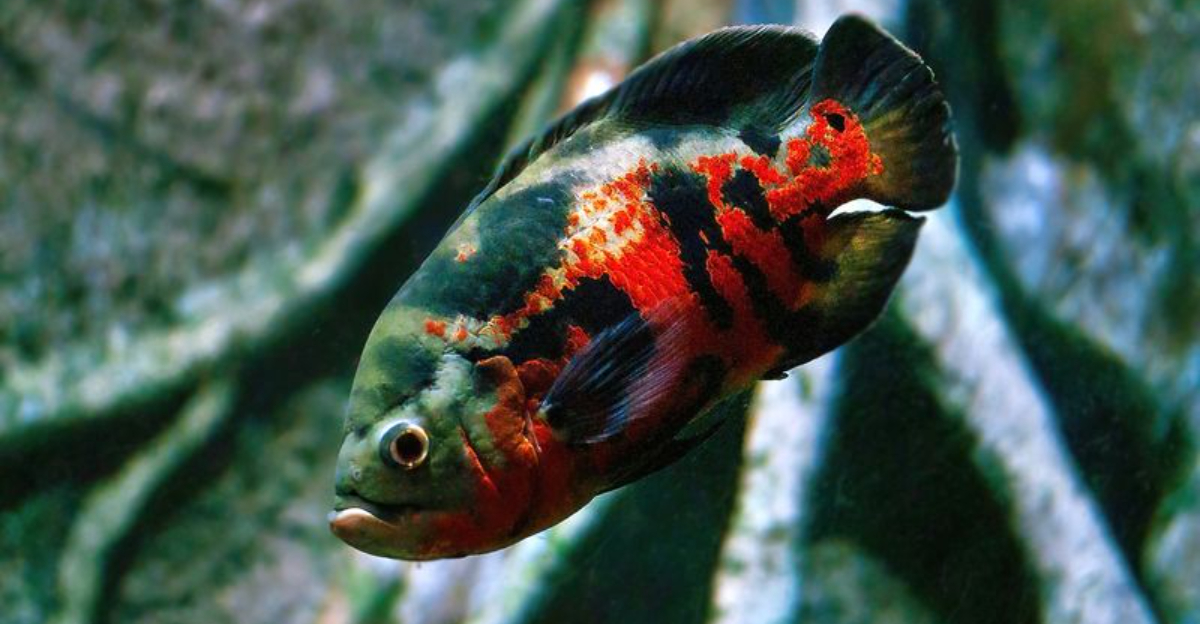When setting up a home aquarium, many hobbyists dream of creating a peaceful underwater oasis filled with vibrant, colorful fish.
However, not all fish are as friendly as they appear at first glance. Some species, with their stunning scales and seemingly peaceful demeanor, can surprise even seasoned aquarists with their aggressive behavior.
This list uncovers such aquarium fish that may not get along with others as one would hope. From territorial disputes to unexpected nipping habits, these fish have tricks up their fins that can disrupt the harmony of any tank.
Dive into the world of these deceptively charming but potentially troublesome aquarium inhabitants.
1. Betta Fish
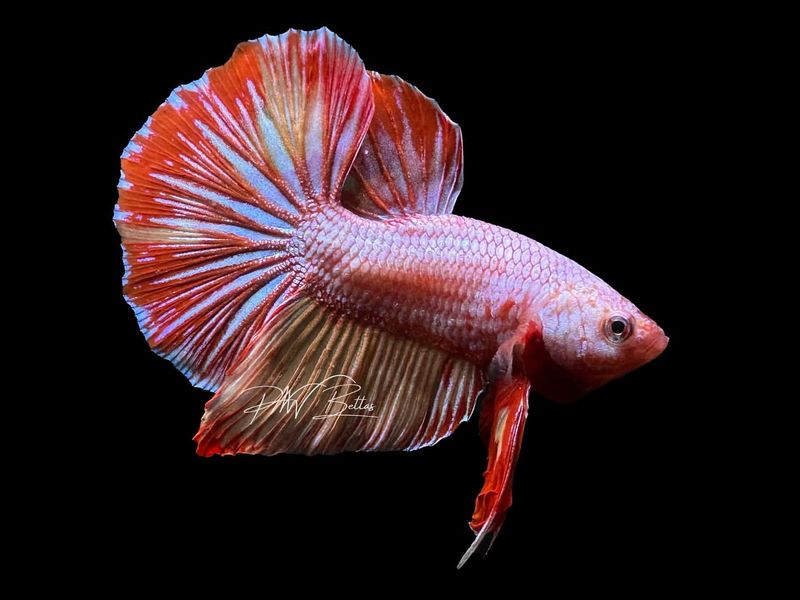
Often admired for their vibrant colors and flowing fins, Betta fish are a popular choice for aquarium enthusiasts. These beautiful fish, native to Southeast Asia, are known for their aggressive tendencies, especially among males.
In captivity, keeping two male Bettas in the same tank can lead to intense territorial fights, which might result in injury or even a fatal outcome.
While they can sometimes coexist with other species, tank mates must be chosen carefully to avoid fin-nipping and stress. It’s essential to provide ample hiding spaces and maintain a peaceful environment to keep Betta fish content.
Despite their belligerent nature, Betta fish can be a delightful addition to an aquarium if managed properly and housed individually or with compatible species.
With their striking appearance, Bettas are a misunderstood species often mistaken for being as serene as they look. However, understanding their needs and behaviors can ensure they thrive without causing issues in a community tank.
2. Red Tail Shark
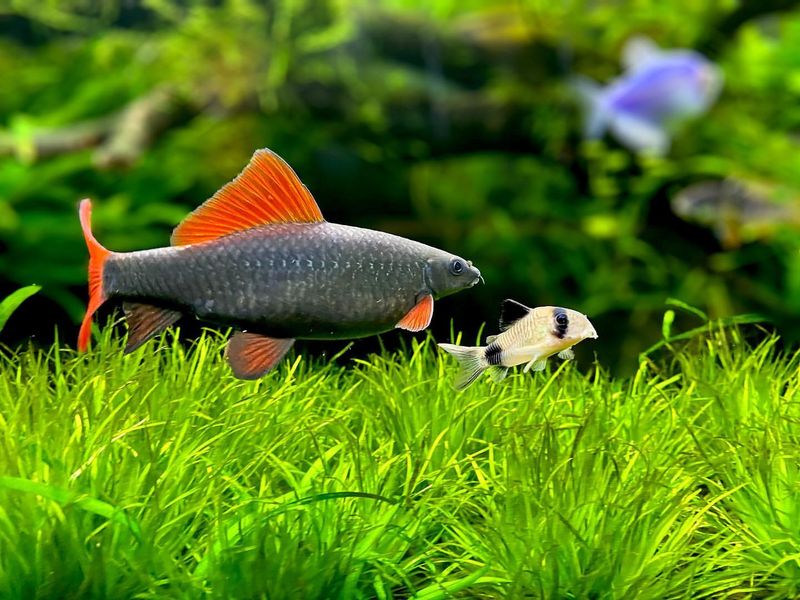
With its striking red tail and sleek black body, this is another visually captivating species that can surprise aquarists with its aggressive behavior. These fish are known for being territorial, often asserting dominance over their chosen space in the tank.
Red Tail Sharks require a large tank with plenty of hiding spots to reduce aggression and stress. They are best kept with similarly sized or larger fish to avoid bullying smaller tank mates. This species thrives in well-oxygenated water with a strong current, mimicking their natural river habitats.
Despite their aggressive tendencies, Red Tail Sharks can be rewarding to keep for those with the experience to manage their needs. Proper tank conditions and compatible companions are crucial to maintaining harmony in a community aquarium where these sharks reside.
3. Oscar Fish
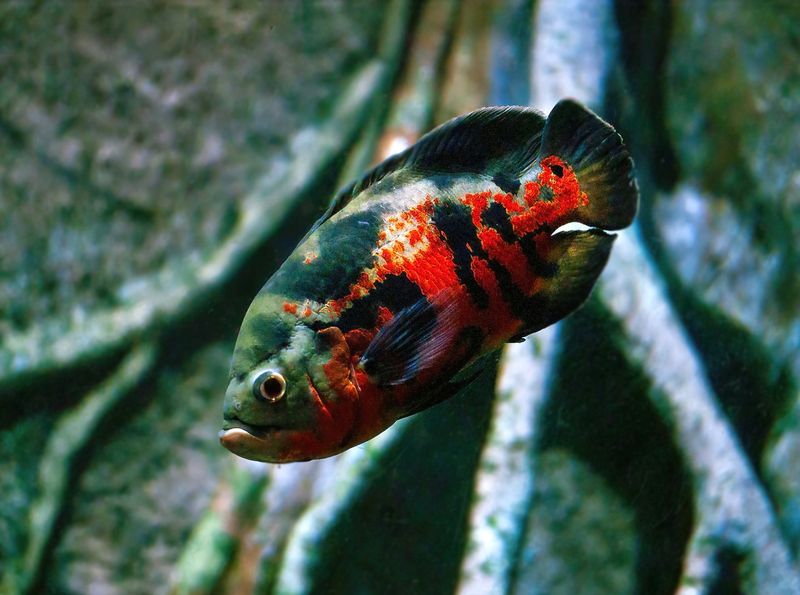
Oscar fish, known for their intelligence and personality, are often likened to underwater pets. However, these large cichlids can be aggressive, particularly in smaller tanks. Their territorial nature often leads to disputes with other fish, making them suitable only for spacious aquariums.
Oscars require a tank environment that can accommodate their size and swimming needs, with robust filtration to handle their waste. They are best kept with other large, equally aggressive species or in a species-specific tank.
Despite their size and temperament, Oscar fish can form bonds with their owners, recognizing them and sometimes even allowing gentle interaction. Their aggressive demeanor is often matched by their engaging character, making them a fascinating choice for aquarists who can meet their demanding care requirements.
4. Green Terror Cichlid
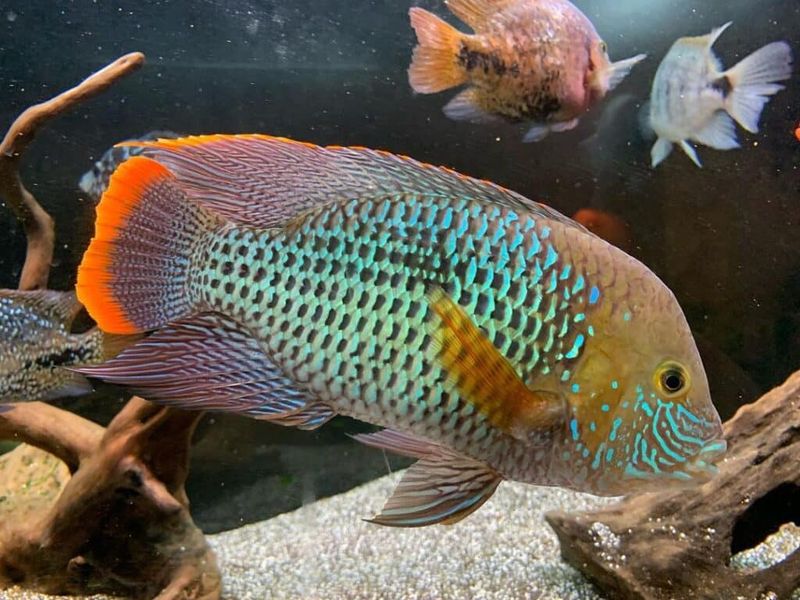
The Green Terror Cichlid lives up to its name with its bold colors and equally bold behavior. Native to the tropical rivers of South America, these cichlids exhibit territorial aggression, especially during breeding periods.
Green Terrors require a structured tank with rocks and caves to establish territories and reduce conflict. They thrive in water conditions that replicate their natural habitat, with moderate flow and stable parameters.
Though aggressive, Green Terrors are captivating due to their striking appearance and the challenge they pose to aquarists. With the right setup and careful selection of tank mates, they can coexist with other robust fish, offering a rewarding experience for those willing to put in the effort to manage their care and environment.
5. Jack Dempsey Fish
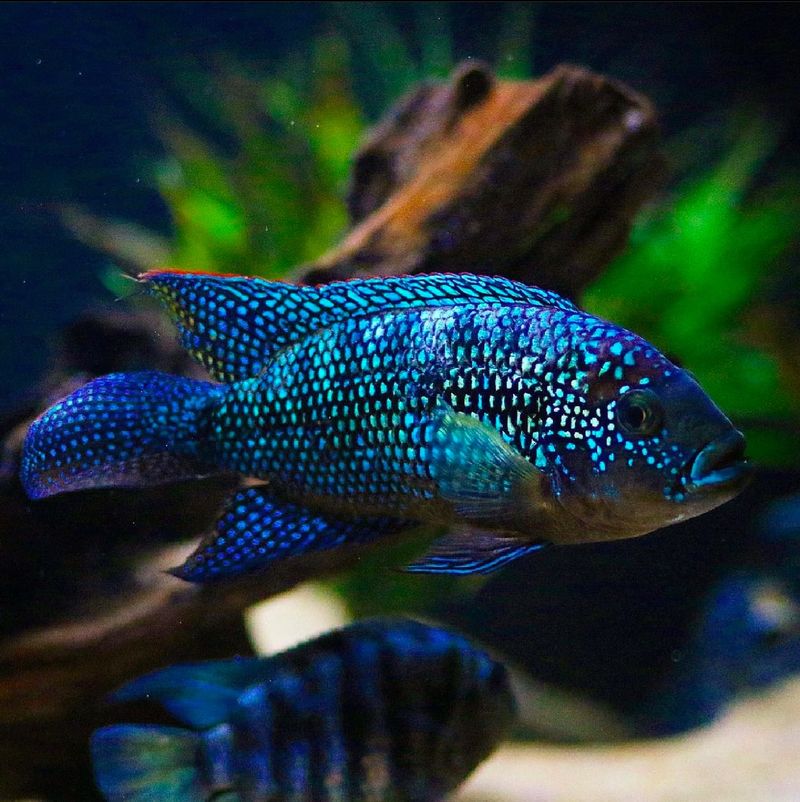
Named after the famous boxer, the Jack Dempsey fish is known for more than just its beautiful iridescent scales. These fish can display a pugnacious nature, often establishing dominance in a tank.
Proper tank setup is crucial, providing ample space and hiding spots to mitigate aggressive behavior. Jack Dempseys are best kept with fish of similar size and temperament to prevent bullying. A well-maintained environment with stable water conditions is essential for their health and well-being.
While their aggressive tendencies can be challenging, Jack Dempsey fish are appreciated for their unique looks and the lively dynamic they bring to a tank. They require commitment and care but can be a rewarding addition to an aquarium for those who appreciate their spirited character.
6. Angelfish
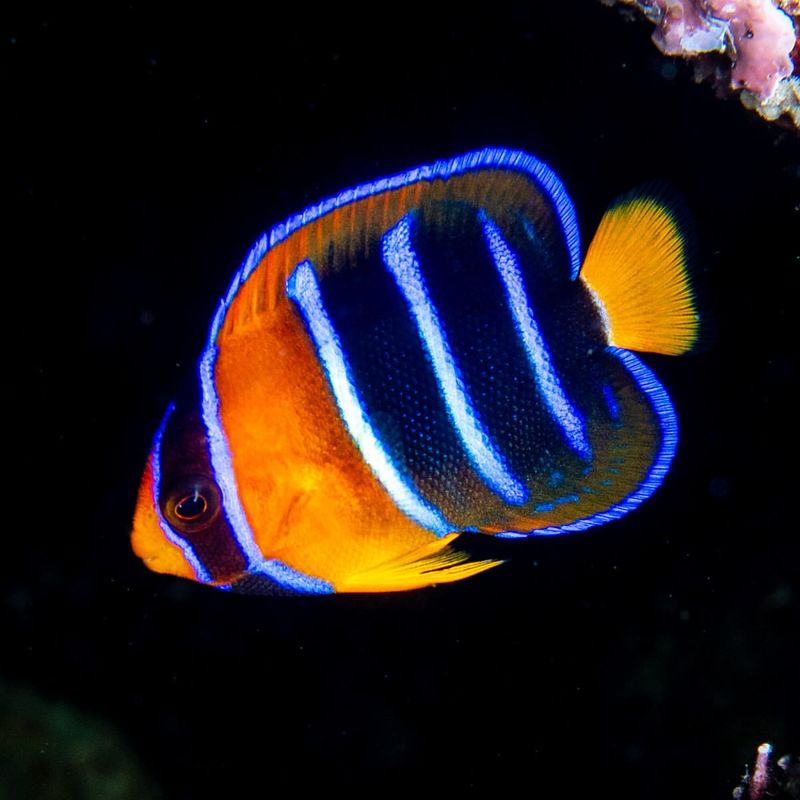
With their graceful appearance, Angelfish might seem the epitome of tranquility. However, these popular aquarium inhabitants can be surprisingly aggressive, particularly during breeding times.
Angelfish require a spacious tank with a well-structured environment to establish territories. Providing plenty of plants and decorations can help minimize conflicts. They are best kept in groups, where a social hierarchy can naturally form, reducing aggression.
While managing their temperament can be demanding, Angelfish reward aquarists with their elegant presence and intriguing behaviors. With the right tank mates and conditions, they can be a stunning centerpiece in a community aquarium, offering both beauty and complexity to the underwater environment.
7. Convict Cichlid
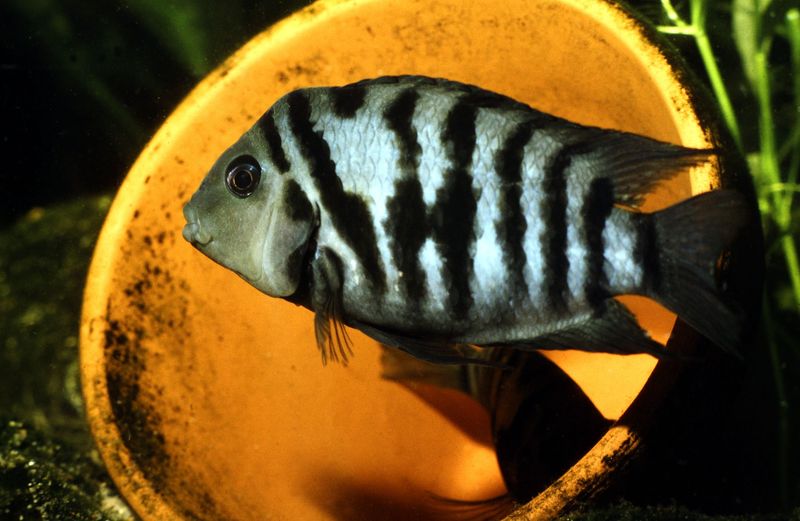
Named for its distinctive black-and-white stripes, a small but feisty fish often underestimated due to its size. These cichlids are known for their territorial nature, particularly during breeding.
They thrive in aquariums that mimic their natural rocky habitats, with plenty of hiding places to establish territories. Convict Cichlids can be fiercely protective of their young, often showing aggression towards other tank mates.
Despite their temperament, they are popular among hobbyists for their striking appearance and fascinating breeding behaviors. When kept in a suitable environment with compatible tank mates, Convict Cichlids can offer a dynamic and engaging aquarium experience, rewarding those who enjoy their lively nature.
8. Flowerhorn Cichlid
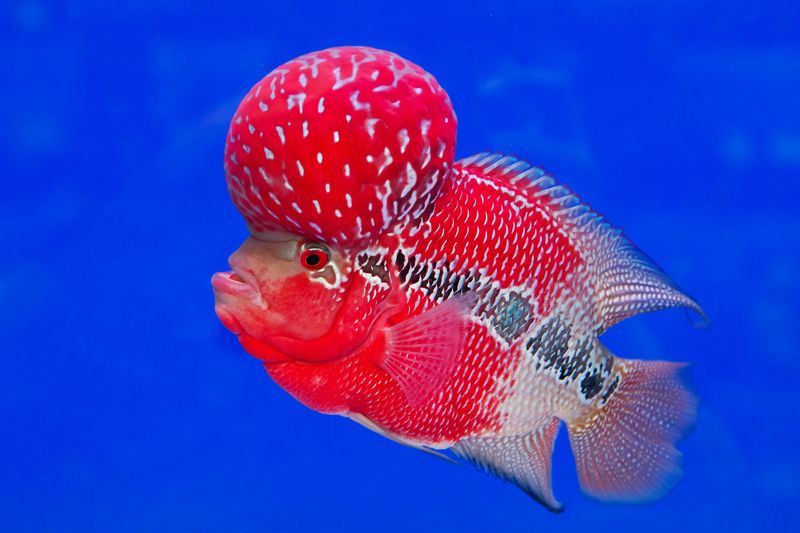
Flowerhorn Cichlids are renowned for their striking appearance and the distinctive nuchal hump on their heads. This hybrid species is known for its aggressive nature, often requiring a tank of its own.
Flowerhorns require spacious tanks to accommodate their size and allow for natural behavior expression. They can be territorial and are best kept without other fish unless the tank is exceptionally large and carefully managed.
Despite their aggressive tendencies, Flowerhorn Cichlids are popular for their unique looks and interactive nature. They can recognize their owners and even react to movements outside the tank. For those willing to meet their care needs, Flowerhorns can provide a visually stunning and interactive aquarium experience.
9. Tiger Barb
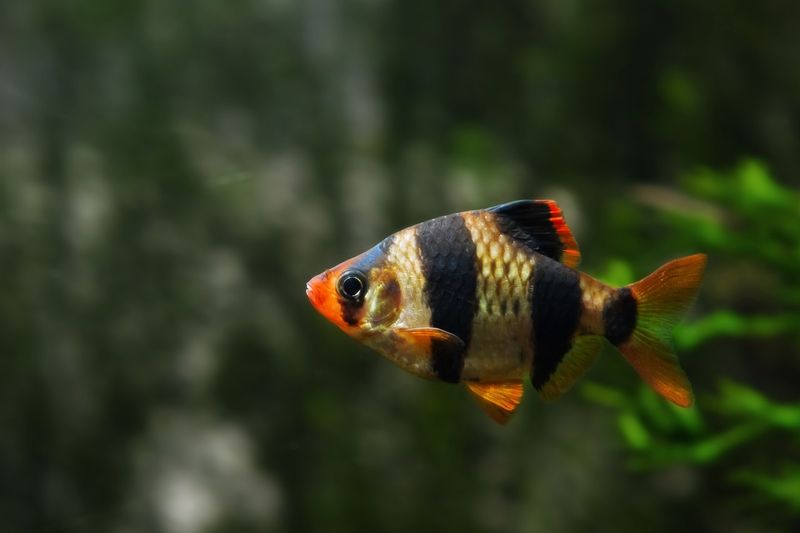
Tiger Barbs are small, active fish known for their striking black stripes and playful nature. Despite their small size, they can be quite the troublemakers in a community tank.
These fish are notorious for fin-nipping, especially when kept in insufficiently sized groups. It’s recommended to keep them in schools of at least six to minimize aggression and nipping behavior.
Tiger Barbs thrive in well-planted tanks that provide hiding spots and swimming space. When their social needs are met, and they are kept with compatible tank mates, they can add vibrant movement and energy to an aquarium, bringing life and color to any setup.
10. Jewel Cichlid
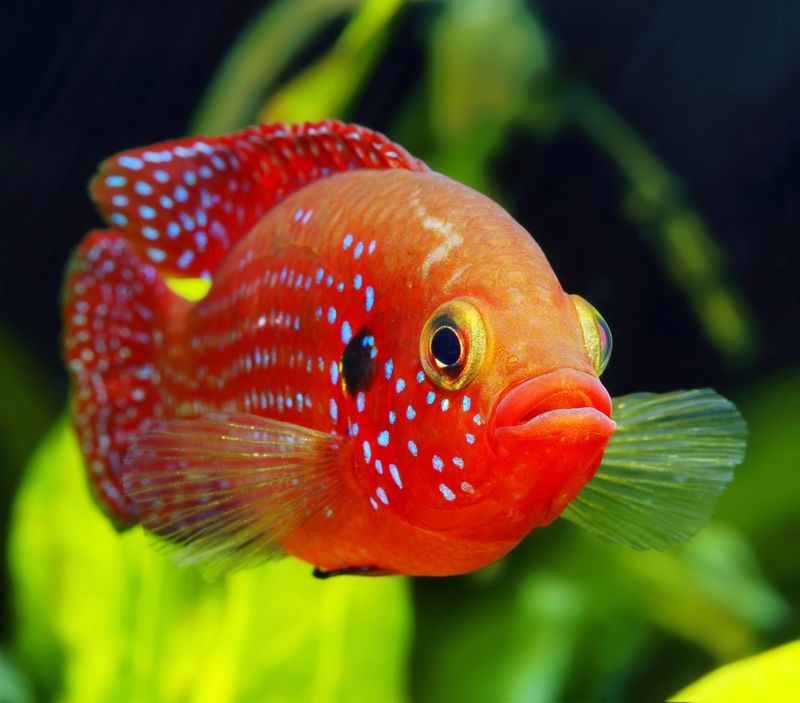
Native to African waters, these cichlids are territorial, especially during breeding.
They thrive in tanks that replicate their natural environment, with plenty of rocks and hiding spots to establish territories. Mixing Jewel Cichlids with other fish requires caution, as their aggressive tendencies can lead to conflicts.
Despite their challenging nature, Jewel Cichlids are appreciated for their vivid colors and the lively dynamics they introduce. For aquarists willing to manage their needs, they offer a rewarding and visually stunning addition to a well-planned aquarium setup.
11. Peacock Cichlid
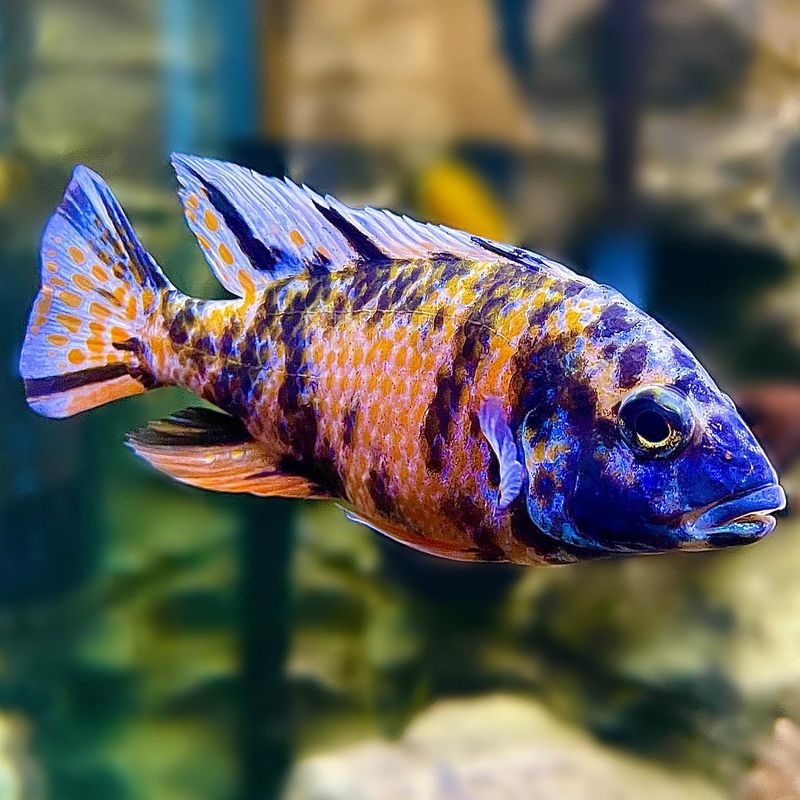
Peacock Cichlids are known for their dazzling colors and relatively peaceful nature among cichlids, but this doesn’t mean they are entirely without aggression. They can be territorial, especially in crowded conditions.
To reduce aggression, it’s essential to provide ample space and hiding spots in the tank. Peacock Cichlids thrive in well-maintained environments that mimic their natural lake habitats.
While they are generally less aggressive than other cichlid species, their beauty and dynamic behavior make them a popular choice among hobbyists. When kept in the right conditions, Peacock Cichlids can coexist peacefully with other species, adding vibrant color and elegance to a community aquarium.
12. Bucktooth Tetra
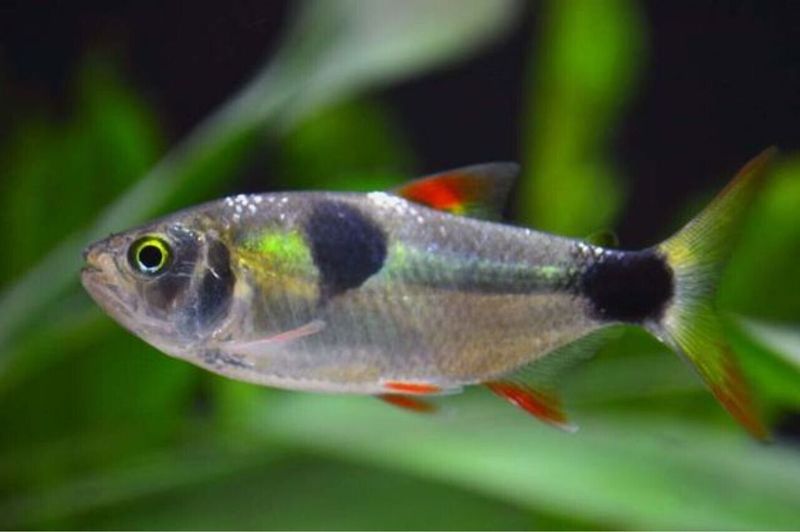
At first glance, the Bucktooth Tetra may appear unassuming, but this small fish is known for its aggressive feeding habits. Unlike other peaceful tetras, these fish are notorious for nipping at the fins of their tank mates.
They are best kept in species-specific tanks or with larger, fast-swimming fish that can avoid their attention. Providing a well-structured tank with plenty of swimming space can help mitigate some of their aggressive tendencies.
Despite their challenging nature, Bucktooth Tetras can be fascinating to observe due to their unique behaviors. With careful management and the right tank environment, they can thrive and offer a distinctive addition to an aquarium, appealing to those interested in their atypical character.
13. Red Devil Cichlid
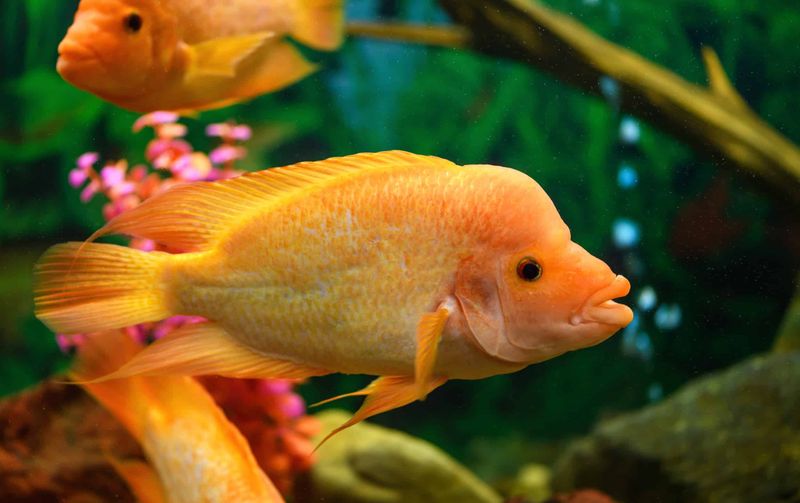
Aptly named, the Red Devil Cichlid is notorious for its fiery temperament. These fish are highly territorial and can become aggressive towards tank mates.
To keep a Red Devil, it’s advisable to provide a large tank with plenty of room for them to establish territory. As adults, they can reach up to 15 inches in length.
While challenging, keeping a Red Devil can be rewarding for those who appreciate their bold personalities and stunning appearance.
14. Blue Acara
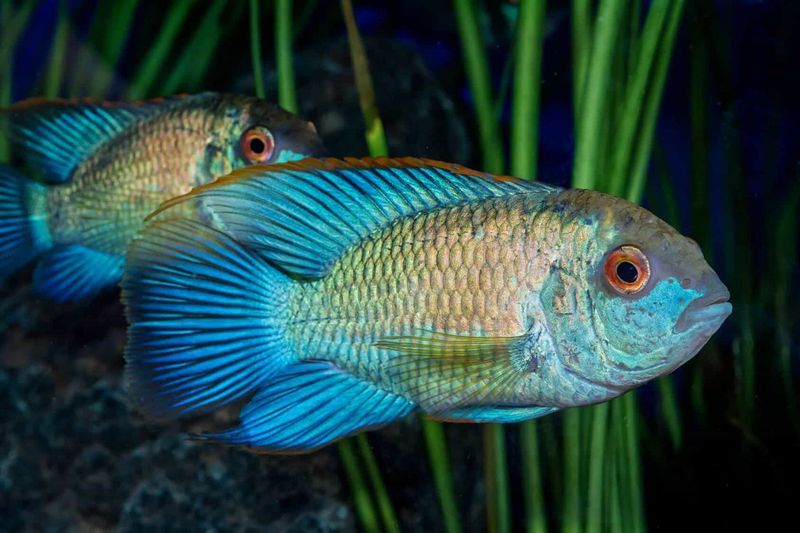
With its shimmering blue scales, the Blue Acara is a visually appealing fish that, while generally peaceful, can exhibit territorial behavior if provoked. These cichlids are more tolerant than their aggressive counterparts but still require careful tank mate selection.
They thrive in well-planted tanks with ample swimming space and a stable environment. Blue Acaras can be kept with other similarly sized, non-aggressive fish in a community setting.
Though not as aggressive as other cichlids, Blue Acaras still bring a touch of liveliness and color to an aquarium. Their manageable nature and striking appearance make them a favored choice for those looking to add beauty and balance to their aquatic displays.

